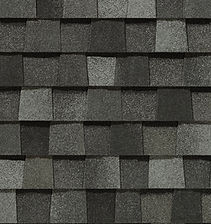What’s That Black Streaking on Your Roof? Here’s What You Need to Know
- Staff
- May 25
- 3 min read
Updated: May 27
If you've ever looked up at a residential asphalt roof and noticed long, unsightly black streaks, you're not alone. This common issue plagues millions of homes across the country and can make even a relatively new roof appear aged and neglected. But what exactly causes these black marks, and more importantly, what can you do about them?

What Causes Black Streaks on Asphalt Roofs?
The black streaking you see on many homes is typically caused by a type of algae called Gloeocapsa magma. This airborne algae is particularly common in warm, humid climates but has been spreading steadily into cooler regions as well. It feeds on the limestone filler found in many asphalt shingles, and the black color you see is actually a protective outer coating that shields the algae from UV rays.
Once it takes hold, the algae spread quickly, especially on north-facing roofs or shaded areas where moisture tends to linger.
How to Prevent Algae Growth
Prevention is the best line of defense when it comes to roof algae. Here are a few proactive steps homeowners can take:
Install copper or zinc strips near the roof ridge. When rainwater runs over these metals, it releases ions that inhibit algae growth.
Trim overhanging trees to reduce shade and improve sunlight exposure.
Clean gutters regularly to ensure proper water drainage.
Use algae-resistant shingles if you're replacing your roof or building a new home.
Cleaning and Removing Black Streaks
If your roof already has black streaks, you can remove them—but caution is key. Harsh cleaning methods can damage shingles and shorten your roof’s lifespan.
Soft washing with a mixture of water, bleach, and detergent is the most common and recommended method. It kills the algae without applying high pressure that could dislodge shingles or granules.
Avoid pressure washing unless done by a professional who knows how to do it safely.
Hire a professional cleaning service if you're not comfortable working on the roof yourself.

New Shingle Technologies That Fight Algae
To combat this widespread issue, several major roofing manufacturers have developed shingles designed specifically to resist algae growth. These products incorporate copper or other metal-based granules that disrupt the algae’s ability to grow.
GAF StainGuard Plus™ technology includes time-released copper granules designed to provide long-lasting protection.
CertainTeed’s StreakFighter® shingles use a blend of copper-infused granules to deter algae.
Owens Corning StreakGuard™ shingles also incorporate copper-lined granules to prevent the spread of black streaks.

These technologies have proven to be highly effective, especially in the first 10-15 years after installation. While no roof is ever completely maintenance-free, homeowners using these shingles typically experience significantly less staining and better curb appeal over time.
Final Thoughts
Black streaks on asphalt roofs may be a common sight, but they don’t have to be inevitable. Understanding what causes them—and how to prevent or remove them—can save you money, preserve your home’s appearance, and extend the life of your roof. And if you’re planning a roof replacement, consider algae-resistant shingles from trusted manufacturers to future-proof your investment.
Do you need a new roof? Are you tired of those unsightly streaks? If you live within our service area, give us a call at (877) 846-9566, fill out the form below, or schedule your free inspection online.






















